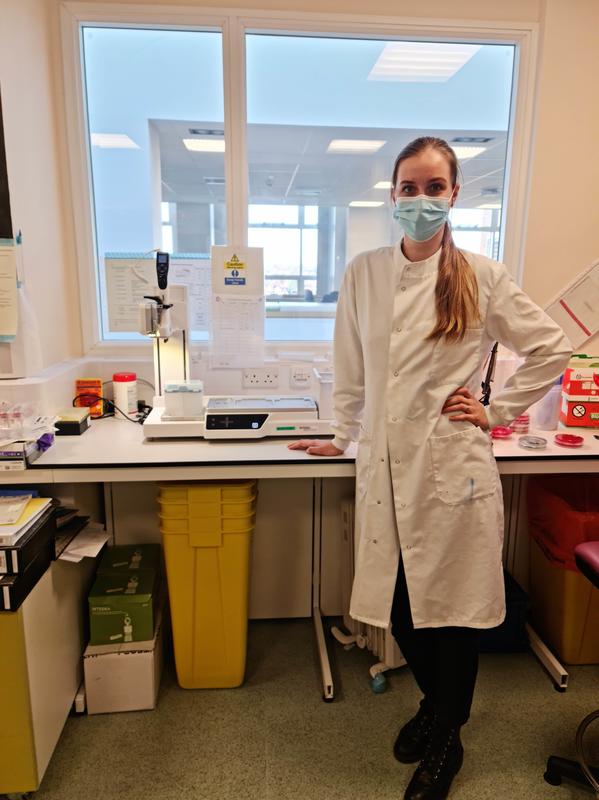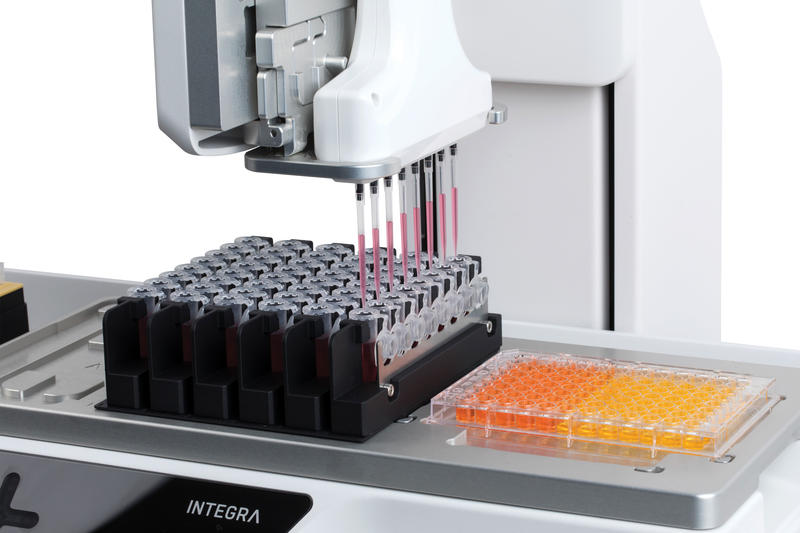ASSIST PLUS aids the battle against antibiotic resistance
Antibiotic resistance is a major problem for healthcare providers worldwide. The PK/PD laboratory at Southmead Hospital is using our ASSIST PLUS pipetting robot and VOYAGER adjustable tip spacing pipettes to assess experimental compounds with potential to progress to clinical trials, evaluating their activity against resistant strains of Gram-negative bacteria to determine the minimum inhibitory concentration (MIC). With thousands of tests to perform each month, the GNA NOW team has automated its protocols on the ASSIST PLUS to relieve the strain of tedious, time-consuming and potentially error-prone manual processes. Senior research scientist Adrianna Olejniczak explained: “Gram-negative bacteria are the main problem in increasing antibiotic resistance, causing many deaths each year and placing a huge financial burden on healthcare systems around the globe. The GNA NOW project is focused on finding novel compounds that overcome this resistance mechanism. It involves teams across Europe with different specialties in the clinical and preclinical trials sectors, all collaborating and sharing results with each other and the pharmaceutical companies that are developing the drugs. Our part of the project is microbroth dilution and MIC testing of potential antibiotics.”
Automation is a lifesaver
As promising new compounds are discovered, they are extensively tested to identify the strengths and weaknesses of each analog, and refined to enhance beneficial properties. Adrianna continued: “We're working on over 50 strains at the moment, but can do as many as 500 – that’s thousands and thousands of MICs a month. You can imagine how laborious and time consuming it is to do that manually; we were pipetting for hours and hours.”

The laboratory began to look at other ways of working, to improve the quality of its testing and relieve the strain of manually pipetting around 4,000 tests a month. Automation was clearly the answer. “We discovered the ASSIST PLUS and VOYAGER adjustable tip spacing pipettes, which turned out to be a lifesaver. The GripTip pipette tips are also quite a game-changer, as they don't inexplicably fall off your pipette,” said Adrianna. “Initially, we used the ASSIST PLUS with an 8 channel VOYAGER, but have since bought two of the 12 channel versions, allowing us to increase our throughput even more. By optimizing our pipetting programs for the 12 channel VOYAGER, we’ve been able to further shorten the run time, using the system to its full potential to perform our workflows as quickly and efficiently as possible. We’re now looking to get another ASSIST PLUS so that we can accelerate our workflow even more.”
Straightforward, flexible pipetting
“We currently use the ASSIST PLUS and VOYAGER pipette to run MIC testing in 96 well plates, dispensing media containing a specific amount of antibiotic into the plate, then adding medium inoculated with bacterial cultures. We can use many different types of reagent and cell culture reservoirs on the ASSIST PLUS, as well as heating blocks if we are working with temperature-sensitive media. We also have the flexibility to use the VOYAGER manually if, for example, we only have one plate to prepare.”

Programming made simple
The GNA NOW team uses the VIALAB software for straightforward programming of the ASSIST PLUS pipetting workflows. Adrianna explained: “The pipetting programs are very user-friendly, and we can easily adjust them as necessary to meet changing needs. VIALAB allows you to select all the individual components you need for your protocol – including reservoirs, microplates and pipettes – and then program the workflow step-by-step with the required volumes and timings. When you’ve finished, you can actually simulate the protocol before you use it, to make sure that there are no programming errors. It takes minutes to set up a new program, and then all you need to do is place the VOYAGER on the ASSIST PLUS and start the run. Being able to customize our programs so easily is a big advantage, it means that everyone can do it.”
Better reproducibility, fewer errors and less strain
Automation is proving a real benefit for Adrianna and her team. “With the ASSIST PLUS, we can just set up the run and walk away. We no longer have to focus intensely for long periods of time, and the reproducibility is much better than it was with manual pipetting. When you have to manually pipette 50 plates per batch of analogs, your eyes get very tired and it is easy to make a mistake. That doesn’t happen with the ASSIST PLUS. Automation is especially helpful for new members of staff, who need a great deal of training to manually achieve the precision, accuracy and consistency we need for this project. Using the pipetting robot means that we don't need to worry about human error – all they need to do is press a button to start the run. User-to-user variability is completely eliminated, making everything more consistent. It’s a big advantage with such a dynamic project where we are working to tight deadlines. Manual pipetting just doesn’t compare to automation,” Adrianna concluded.























